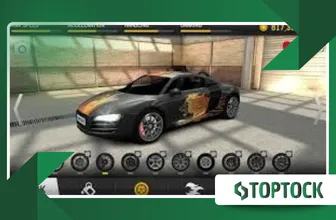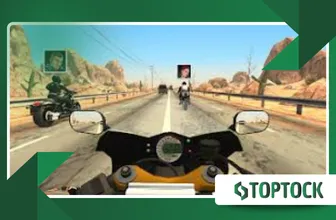Racing Fever: Ride Your Motorcycle Through Traffic Like a Pro

Racing Fever. The allure of the open road combined with the urgency of city commuting defines the spirit of motorcycling.
Anúncios
Experience the thrill of Racing Fever as you slice through congested arteries like a seasoned professional, transforming gridlock into a flowing tapestry of movement.
A motorcycle offers unparalleled agility, but mastering traffic demands skill, precision, and an unyielding commitment to defensive riding.
It’s not about reckless speed; it is about intelligent, calculated maneuvers that maximize efficiency and safety.
Any rider who yearns for the highest level of control must embrace advanced techniques, especially when the asphalt is choked with four-wheeled behemoths.
Anúncios
Why Does Advanced Traffic Riding Matter for Motorcyclists?
Congested urban environments are the true proving ground for a rider’s capabilities.
Every journey through rush hour is a calculated risk assessment and continuous execution of micro-decisions.
Becoming truly proficient means significantly reducing your exposure to common, but often devastating, traffic incidents.
Moreover, advanced techniques unlock the full utility of a motorcycle as a commuter tool.
How Can Riders Improve Visibility and Anticipation? Racing Fever
The first and most crucial skill in heavy traffic is assuming you are invisible to every other driver.
This defensive posture compels riders to actively manage their presence and anticipate potential hazards from all directions.
Always maintain a staggered lane position, favoring the left or right third of the lane to maximize the view of the road ahead and your presence in mirrors.
Always be scanning for the subtle cues of driver intent; a head turn, a slight tire rotation, or even a vehicle’s front wheels cutting a corner.
Read more: Tennis Clash
Use the “policeman’s stare” when approaching intersections, locking eyes with drivers who might pull out. This proactive engagement makes a surprising difference.
Never position your motorcycle directly beside a vehicle, especially a larger one, as this places you squarely in their blind spot.
The mirror check is only part of the equation; always perform a head check before any lateral movement. Riding in traffic is not a static activity.
What Role Does Lane Filtering and Splitting Play in Urban Racing?
Lane splitting and filtering, where legally permitted, are the ultimate expression of motorcycle agility in traffic.
They are not simply a shortcut but a proven safety measure, reducing the risk of a dangerous rear-end collision in stop-and-go traffic.
See how interesting: WGT Golf
Data from a seminal University of California, Berkeley study revealed that motorcyclists who split lanes are significantly less likely to suffer head or torso injuries.
| Scenario | Rear-End Accident Rate (Motorcycle) |
| Lane Splitting/Filtering | 2.6% |
| Not Lane Splitting | 4.6% |
Source: UC Berkeley Traffic Safety Center (Data supports the reduction in rear-end collisions for splitting riders.)
This practice requires a smooth, moderate speed differential.
For example, in California, guidelines recommend a maximum speed differential of 15 MPH over the surrounding traffic and only when traffic is moving at 50 MPH or less.
The key is fluid movement, not aggressive bursts.
What are the Key Advanced Control Techniques for Congestion? Racing Fever
Mastering clutch control and throttle modulation is essential for navigating slow-speed, dense traffic environments.
Low-speed maneuvers require a combination of ‘dragging’ the rear brake, feathering the clutch, and maintaining slight throttle input.
This technique, often called the friction zone drill, stabilizes the bike and allows for precise speed control far below walking pace.
Check this out: Monument Valley 2
Use your body positioning to your advantage by gently counter-leaning the bike to maintain a straight line while using counter-steering inputs to make minute adjustments.
A simple analogy: riding a motorcycle slowly through traffic should feel like a tightrope walker, utilizing constant, small corrections for balance.
Never attempt to rely solely on the front brake during extremely slow-speed maneuvers.
A rider is navigating a tight queue of cars inching towards a toll booth. Instead of alternating between full stops and quick lunges, the pro rider maintains a continuous, slow roll.
They keep a slight drag on the rear brake, find the friction zone of the clutch, and use the engine’s power to maintain stability.
This allows smooth, predictable progress without constantly dabbing their feet.
This controlled, deliberate pace is what separates the novices from those who live the Racing Fever lifestyle safely.

How Can Riders Maintain a Superior Level of Road Awareness?
Maintaining a three-to-four-second following distance is non-negotiable on a motorcycle, providing the necessary stopping distance and escape routes.
When stopped at a light, always position your bike at an angle, looking in your mirrors for vehicles approaching from behind. Why wait to be hit when a simple angle provides a path to safety?
Another example is approaching a complex, multi-lane intersection. The expert rider doesn’t focus solely on the light but checks the side-street traffic, looking for signs of a car running a red light.
Simultaneously, they maintain a safety bubble, ready to accelerate or brake. This all-encompassing awareness is a hallmark of defensive riding.
The best riders use their motorcycle’s inherent power not for speed, but for immediate escape and separation.
Staying in a gear lower than usual gives you instant torque to leap away from a developing hazard, an intelligent application of performance.
When executed with seamless control and heightened spatial awareness, this is the very definition of professional traffic navigation.
The thrill of traffic riding, this controlled burst of Racing Fever, is only enjoyable when it is safe. We are in 2025, and with ever-increasing traffic density, the onus is on the rider to be technically superior.
The advanced techniques discussed here are not just tips; they are the bedrock of responsible, high-level motorcycling.
Embracing these principles ensures every ride is a display of mastery. The goal is to always arrive safely, which is the ultimate victory in the daily Racing Fever.
Frequently Asked Questions
Is lane splitting legal everywhere in 2025?
No, the legality of lane splitting and lane filtering varies significantly by jurisdiction, even within the United States.
Only a handful of states, like California, currently allow broad lane splitting, while others permit limited lane filtering under specific conditions (e.g., at low speeds or when traffic is stopped).
Riders must diligently check local and state traffic laws before attempting these maneuvers.
What is the most common mistake riders make in heavy traffic?
The most common and dangerous mistake is riding in a car’s blind spot for an extended period.
This negates the rider’s defensive riding efforts and significantly increases the risk of a collision when the driver changes lanes.
The correct technique is to either pass quickly or drop back to maintain a clear visual space around the motorcycle.
How can I practice advanced traffic riding techniques safely?
The best way to practice advanced control techniques like low-speed maneuvering and clutch control is in a large, empty parking lot.
Set up cones to simulate tight spaces and practice the friction zone drill repeatedly.
These controlled exercises build the muscle memory necessary for smooth, precise control when navigating real-world Racing Fever traffic situations.










